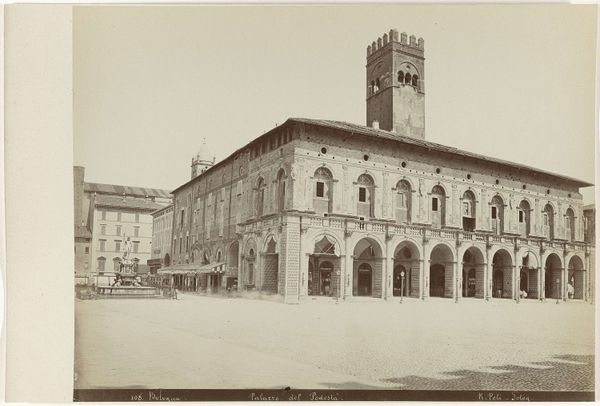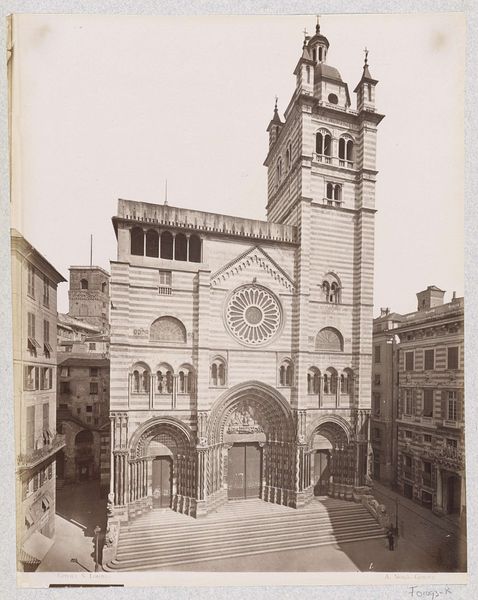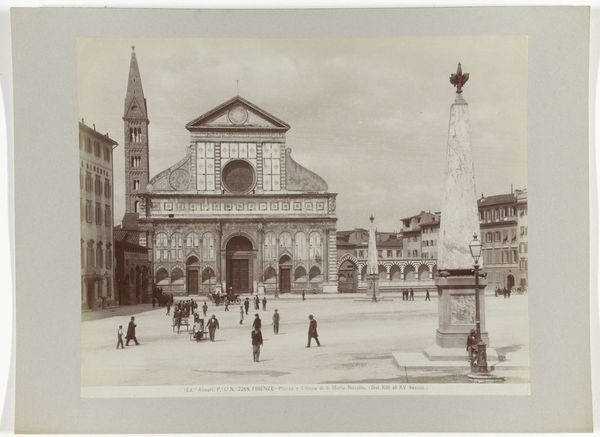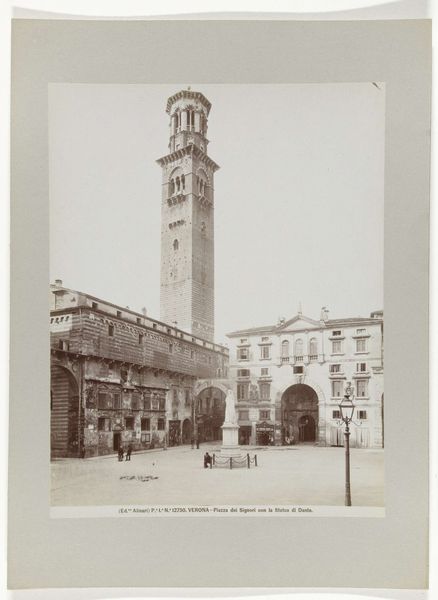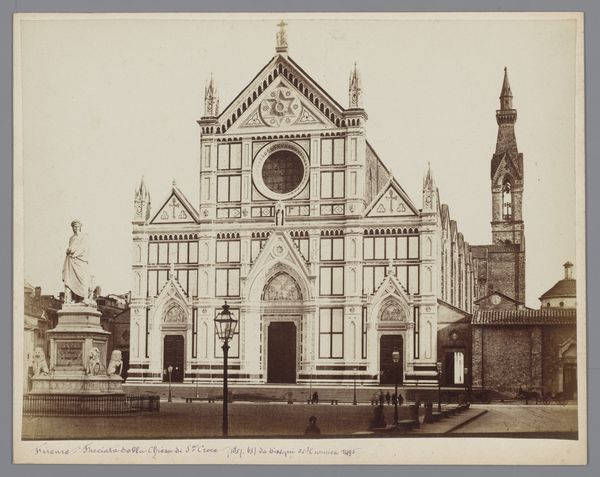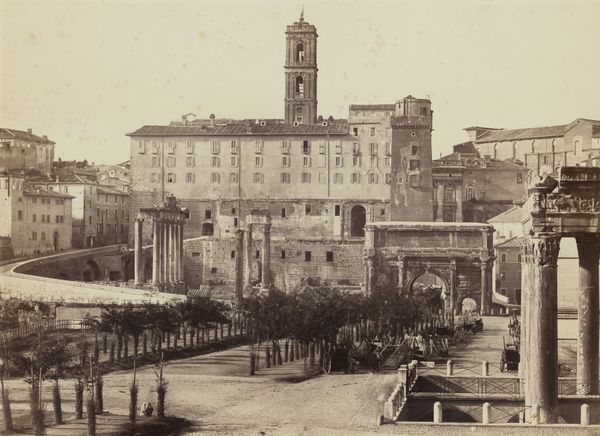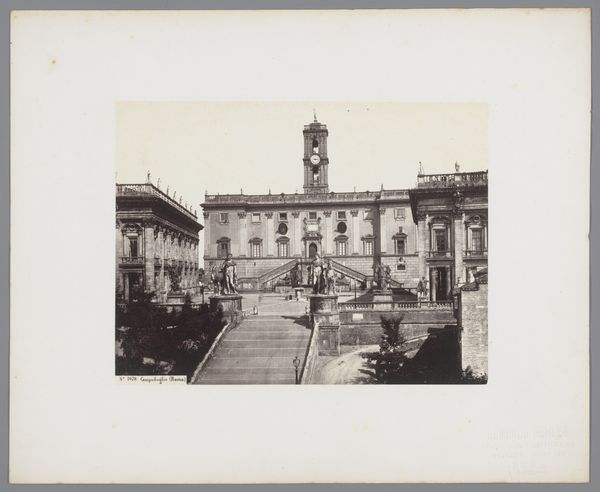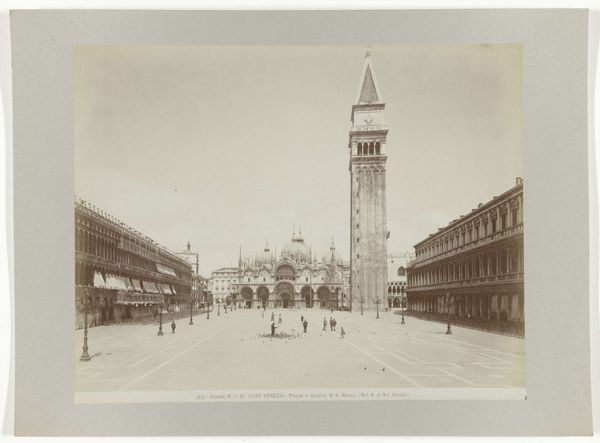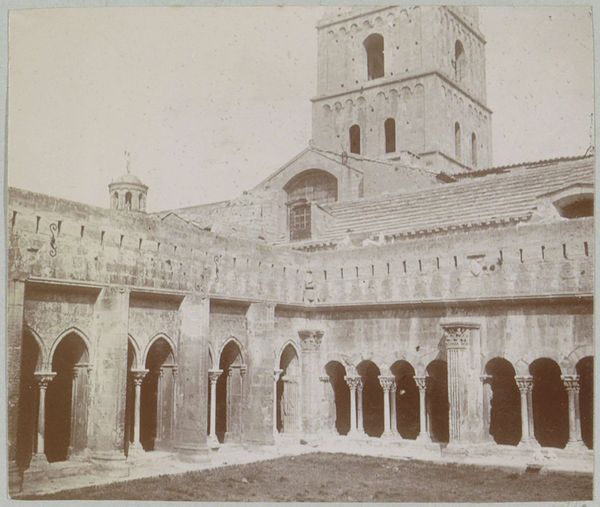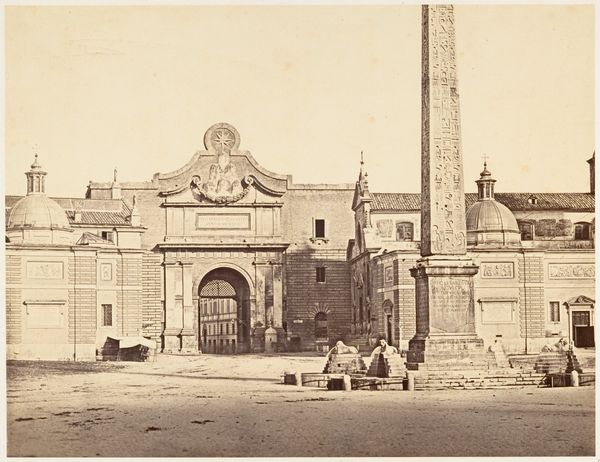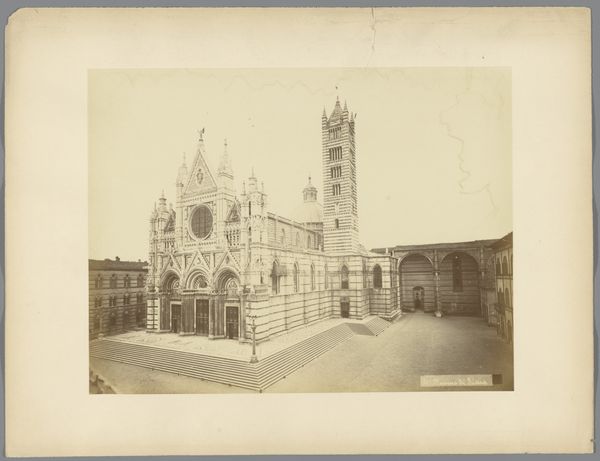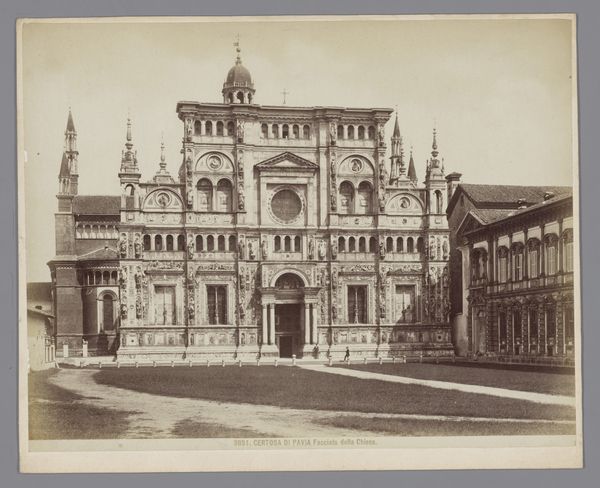
Dimensions: height 209 mm, width 254 mm
Copyright: Rijks Museum: Open Domain
Editor: Here we have "Gezicht op het Palazzo Communale in Bologna," a gelatin silver print made sometime between 1870 and 1890 by R. Peli. It's quite striking how this monumental civic building is captured in such detail. What do you see when you look at it? Curator: I see the means of production clearly impacting the image itself. The gelatin silver print process, with its relative ease of reproduction compared to earlier photographic methods, allowed for a wider dissemination of this image. Consider the social implications: who had access to these prints? How did this photographic technology contribute to shaping perceptions of Bologna’s civic power? Editor: That's a very different angle than I was considering! I was thinking more about the architectural composition itself, the tower and the facade… Curator: But isn't that architecture also a product of its material conditions and the labor involved? Look at the texture of the stone in the photograph, the evidence of weathering, and even potential repairs. What materials were readily available to the builders of the Palazzo Communale? How would that choice of materials have affected not only the physical building, but also the social standing of the materials' origins? The photograph preserves a particular moment in the building's lifecycle and the consumption habits surrounding construction material. Editor: So, by looking at the physical traces within the photo itself—like the stone and weathering—we can consider the social and economic systems in place at the time. That makes sense. Curator: Precisely! This artwork becomes more than just an aesthetic object; it’s a document of labor and materiality within a specific socio-economic context. Editor: I never thought I could analyze architecture this way, using the photograph as a means to analyze material availability and labour! Thank you for highlighting the material aspects, giving a deeper dimension to viewing historical photographs.
Comments
No comments
Be the first to comment and join the conversation on the ultimate creative platform.
